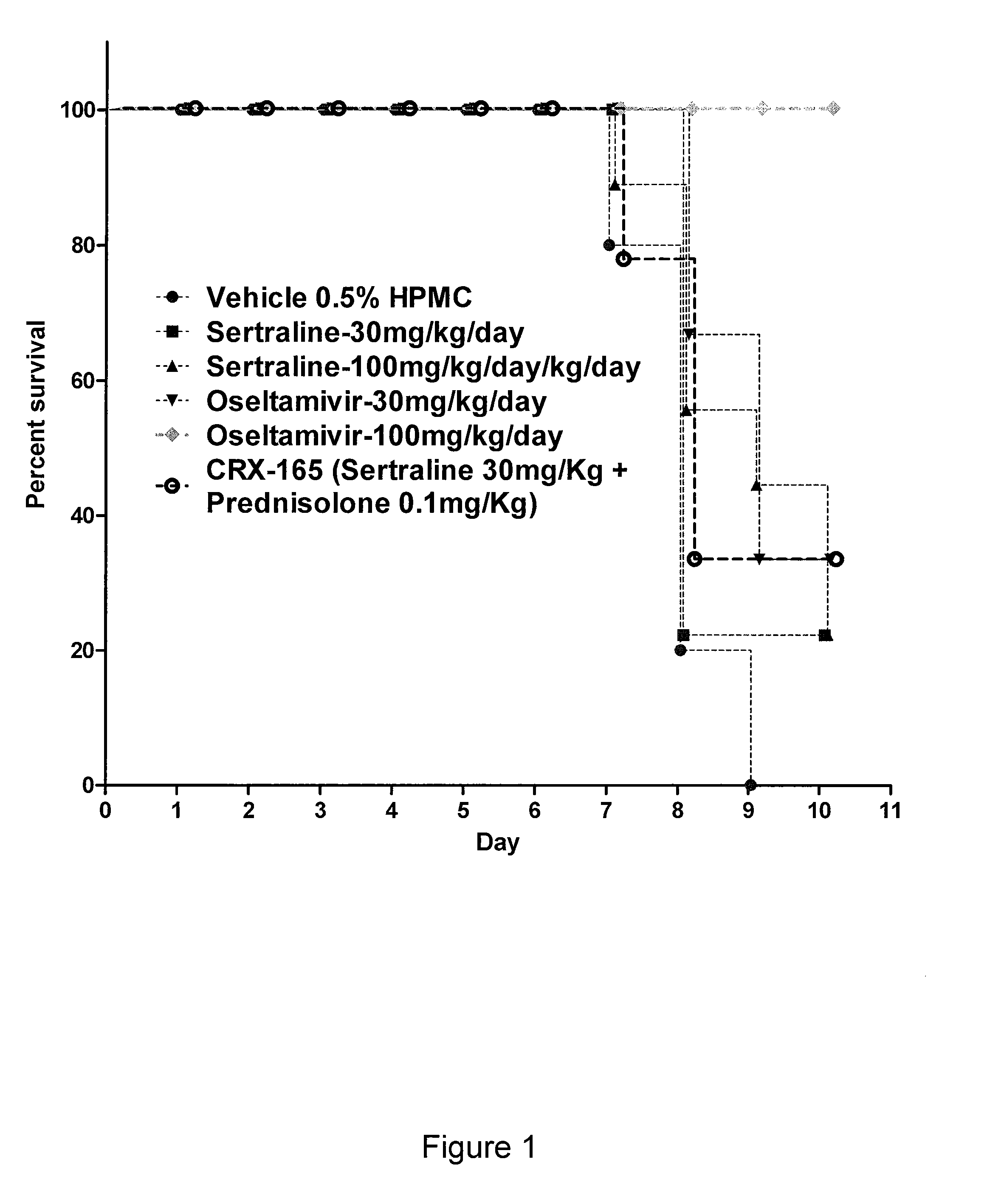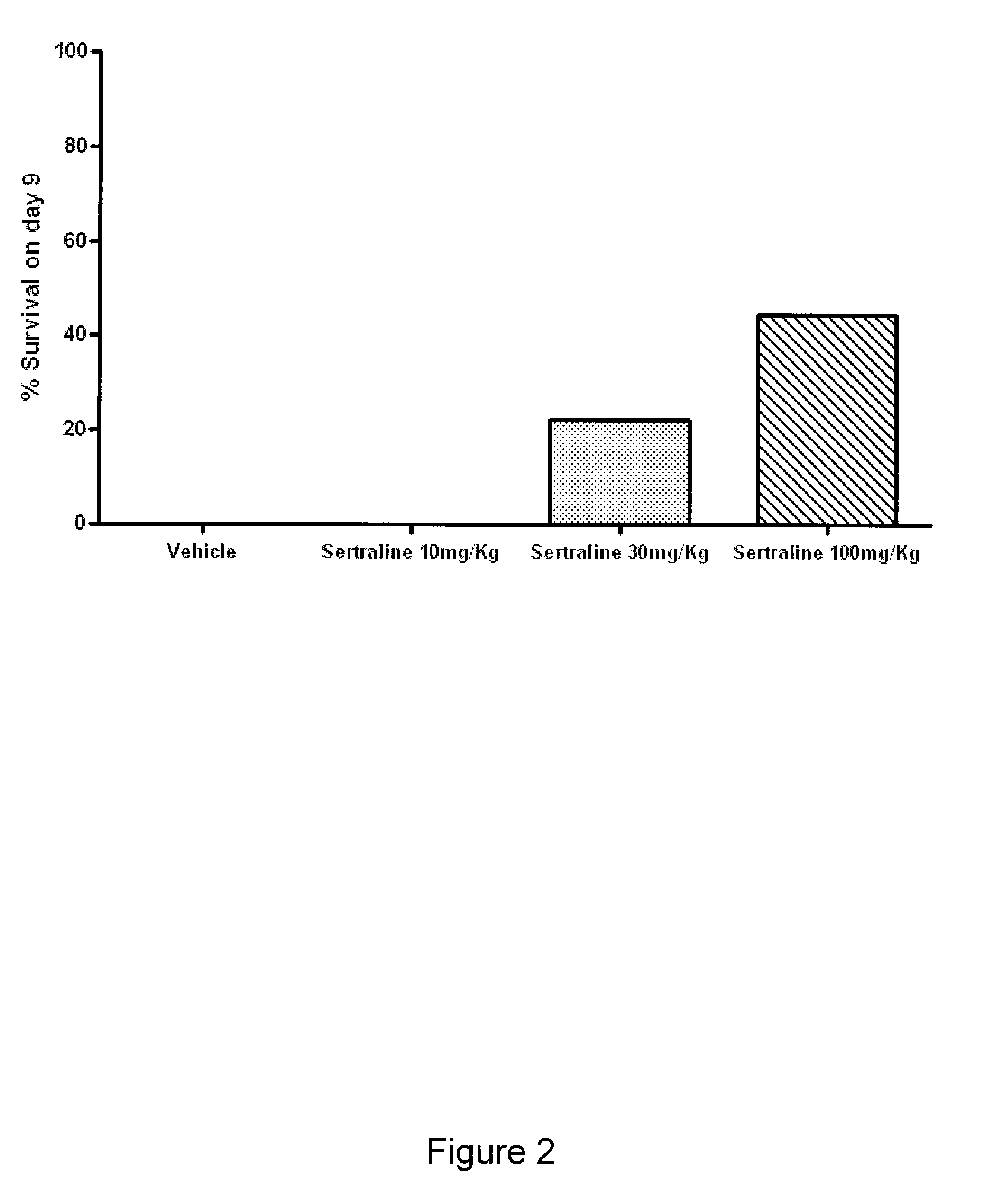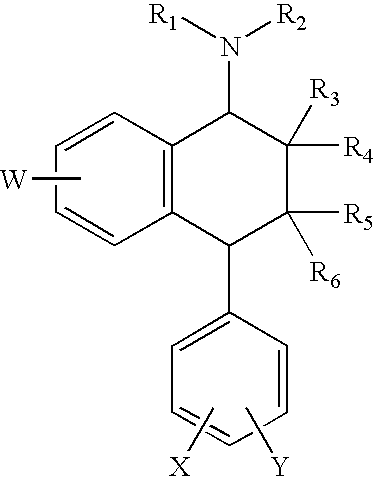Compositions and methods for treatment of viral diseases
- Summary
- Abstract
- Description
- Claims
- Application Information
AI Technical Summary
Benefits of technology
Problems solved by technology
Method used
Image
Examples
example 1
[0301]The HCV replicon assay enables screening of compounds with antiviral activity against HCV viral RNA replication. Huh7 cells expressing a subgenomic RNA replicon of Con1 (genotype 1b) sequence origin and expressing the reporter enzyme luciferase were obtained from ReBLikon, GmBH. In order to perform the assay, seed replicon cells on a 384-well plate at 4,000 cells / well in a total volume of 30 uL / well. The plated cells are incubated at 37° C., 5% CO2. Pre-diluted compounds are added at a 10× concentration to each well to achieve the desired final concentration. Plates are centrifuged at 900×g, 1 minute following the addition of compounds. Incubate cells an additional 48 hours or 72 hours at 37° C., 5% CO2. Remove plates from the incubator 30 minutes to 1 hour prior to the addition of 25 μL / well of SteadyLite luciferase assay reagent from Perkin Elmer in order to equilibrate plates to room temperature. Following the addition of SteadyLite reagent, allow cells to...
example 2
In-Vitro Activity of Combinations in H5N1 Influenza Stimulated Macrophages
[0307]Monocytes purified from blood mononuclear cell preparation were differentiated to macrophages (14 days) in 5% autologous serum. Macrophages were then infected with an A / VN / 3212 / 04 (H5N1) virus at a MOI of two. Cells were incubated with the combination, one hour prior to the infection. During the infection, the drug was washed off for 30 minutes and reintroduced for 3 hours. RT-PCR analysis of mRNA in virus infected macrophages was carried out for the following cytokines: TNF-alpha, IFN-beta, IP-10, IL-6, IL-8, H5N1 matrix gene (Lee et. al., J. Virol., 79:10147-10154, 2005). Cytotoxicity was evaluated visually and by Beta-actin gene expression. Fifteen combinations of agents were tested at three concentrations each.
[0308]From these experiments, the RT-PCR data was analyzed and calculated as a percentage inhibition versus a DMSO-treated control. The percent inhibition data is show in Table 18 below.
TABLE 1...
example 3
Activity of Sertraline and Combinations Containing Sertraline in Influenza Mouse Model
[0309]We also tested the effectiveness of sertraline and combinations containing sertraline in an influenza mouse model. Mouse adapted influenza A / PR / 8 / 34 was procured from American Type Culture Collection (ATCC) and propagated in Madin-Darby Canine Kidney (MDCK) cells. The virus stock was titrated in MDCK cells to give a 108TCID50 / mL, prior to use in mice. The virus stock was diluted in phosphate buffered saline (PBS) such that the working concentration was 104.5 TCID50 of virus per 50 μL.
[0310]Specific pathogen free, male C57 / BL6 mice weighing 20-25 g were procured from Biological Resource Centre (BRC) and housed in groups of 3, in cages with Corncob bedding (Harlan-Teklad, U.K.). Experiments were conducted in Animal Bio-safety level 3 (ABSL-3) rooms. Cages were placed in isolator maintained at −100 pa pressure and supply of HEPA filtered air. Mice were provided with commercial rodent diet (Harla...
PUM
| Property | Measurement | Unit |
|---|---|---|
| Time | aaaaa | aaaaa |
| Temperature | aaaaa | aaaaa |
| Volume | aaaaa | aaaaa |
Abstract
Description
Claims
Application Information
 Login to View More
Login to View More - R&D
- Intellectual Property
- Life Sciences
- Materials
- Tech Scout
- Unparalleled Data Quality
- Higher Quality Content
- 60% Fewer Hallucinations
Browse by: Latest US Patents, China's latest patents, Technical Efficacy Thesaurus, Application Domain, Technology Topic, Popular Technical Reports.
© 2025 PatSnap. All rights reserved.Legal|Privacy policy|Modern Slavery Act Transparency Statement|Sitemap|About US| Contact US: help@patsnap.com



